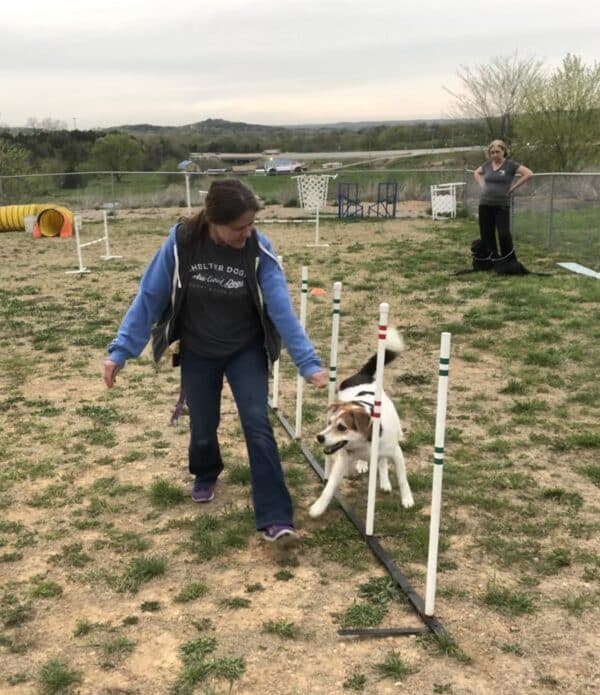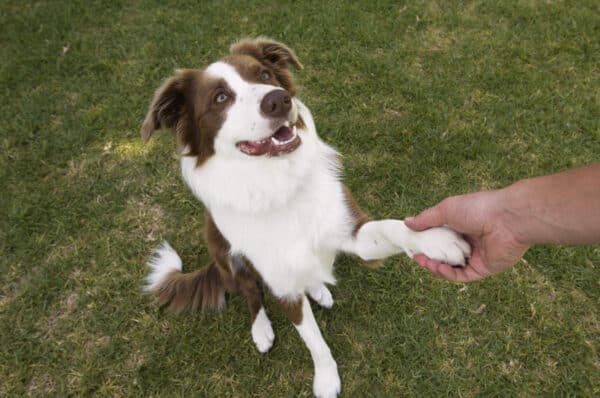Like a baby, the world is a brand-new place to a puppy. There are new people to meet, new places to see, new sounds to hear … and much more. But sometimes these introductions don’t go so well and you’re left with a very scared puppy.
When I first brought Cooper, my Cavalier King Charles Spaniel puppy for a walk, I thought he would never want to go on one again. He feared other people, dogs and noises to the point where he would turn around and scratch at my legs until I’d pick him up.
This behavior wouldn’t just happen on walks but in other situations like during a storm or meeting new people. I worried that Cooper wouldn’t be able to overcome his fears (luckily, after getting the proper help, he’s turned into one confident pup).
The good news is, you can train your scared puppy to overcome his fears. So, how do you tell if you have a scared puppy in the first place? And what are the right steps to take to help a scared puppy? Let’s find out.
First, what are the signs of a scared puppy?
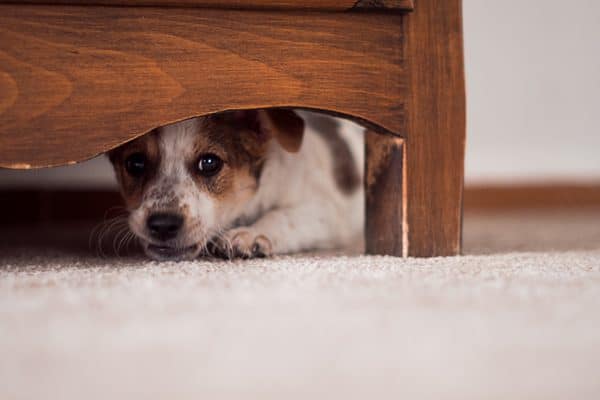
Your puppy’s behavior is new to you — so you might not know how to determine if you have a scared puppy or not.
“Puppies show fear by any one or all of these simultaneously: hiding, rounded body, tail tucked, lip licking, yawning, whining, air snapping, raised upper lip (like they are smiling), blinking, urinating, sniffing out of context, running away and jumping into your lap for safety,” explains dog trainer Jill Breitner, creator of the Dog Decoder app.
What scares puppies?
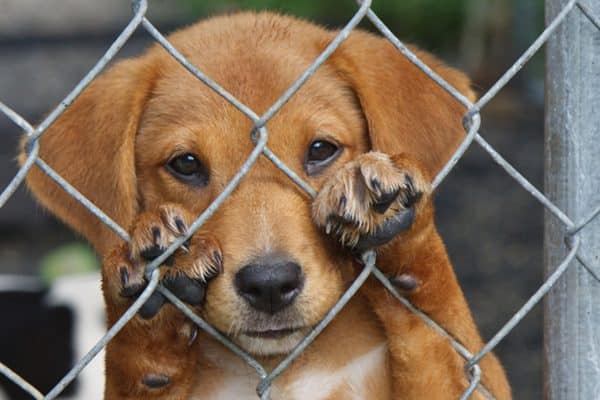
A puppy often fears situations that make him feel alone and species and sounds he is not accustomed to. By recognizing what scares your puppy, you can focus in on what to do next to help your scared puppy overcome his fears. Different fears call for different assistance.
Jill lists the following common puppy fears:
- New dogs
- Animals of different species
- Being left alone too soon, which creates separation anxiety
- Getting left in a crate if not trained properly
- Sounds that startle them
- Stairs
- Riding in the car
- Meeting new people
- Trips to the vet
“It is possible [that] when approached slowly, puppies can overcome fears quickly and easily,” says Jill. “But if they show any of the signs mentioned earlier, then we need to go in short sessions and not move faster than the puppy is comfortable with.”
What are fear periods and what do they have to do with your scared puppy?
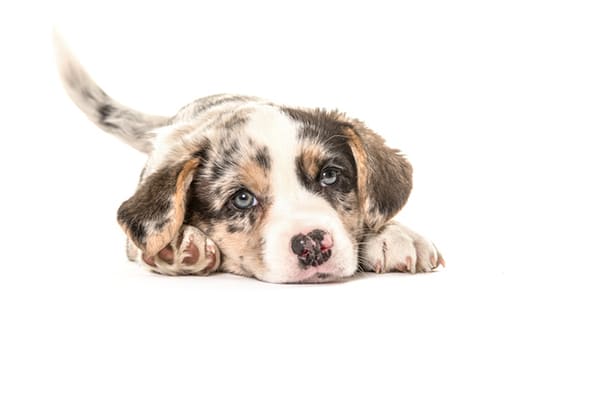
Dogs are susceptible to fear regardless of whether they’re puppies or not. However, there are a few critical fear periods for puppies. It is important to recognize these periods to know how to handle them.
“[The] first fear period is between eight to 11 weeks, and again between six to four months,” Jill explains. “[Puppies] can have a few periods of fear where their flight instinct is prevalent. They can fear something that they previously didn’t fear and they can be things that appear silly to us, but we need to take care to reintroduce or even desensitize them.”
Got a scared puppy? What to do next.
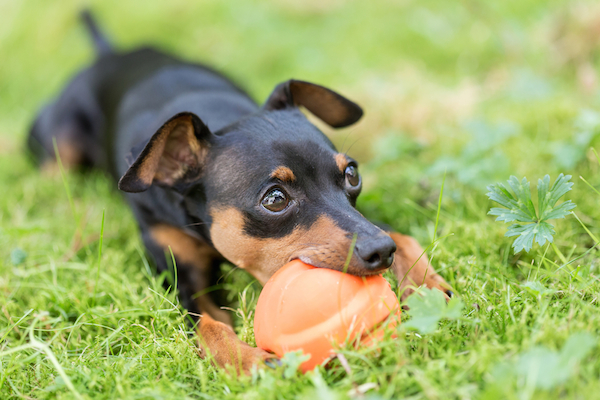
Got a scared puppy on your hands and know what’s scaring him? Now it’s time to help your scared puppy.
The next time a scared puppy faces his fears, Jill suggests to, “slowly reintroduce [him], making sure to pay attention to his body language and that the association to the feared object, person, etc. is changed to an association that is positive.”
Help your scared puppy during this new introduction by offering him treats or toys. “This changes the association of fear to fun,” says Jill. “Using high-value treats for anything feared goes a long way to changing the association to one of joy or excitement instead of something to fear.”
It is important to make sure you pay attention to a puppy’s emotional state every step on the way. “The key is to properly socialize puppies without flooding them [with access] to their environment,” Jill explains. “Keep sessions short, three to five minutes maximum, [when exposing] to anything new. Spending short sessions in any new situation and adding duration slowly over a few days helps keep pups engaged, enthused, and [it gives them] enough energy to deal with anything new.”
How I helped my scared puppy
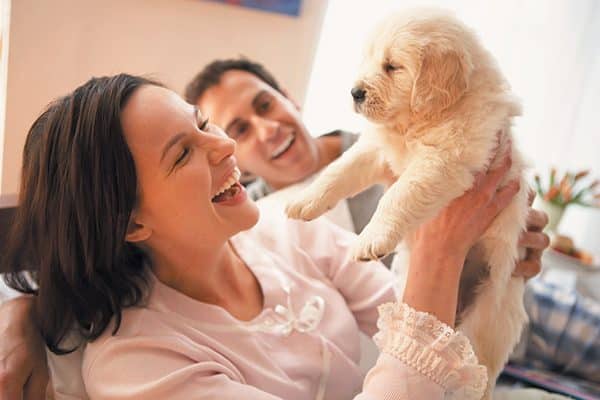
As for my own scared puppy, I realized the walks were too long and overwhelming. So, I cut down the time of the walking sessions so that Cooper was not as overwhelmed with introductions. Eventually, those shorter sessions would get longer each time. Cooper got accustomed to new things on his walks and no longer turned around to jump into my arms.
Remember, you have the potential to help your scared puppy overcome his fears. Be patient and affectionate with you puppy while helping him during this time.
Seek professional help any time your puppy continues to show signs of fear for a prolonged period of time and if helping him yourself isn’t working.
A positive reinforcement-based trainer, your veterinarian and/or a veterinary behaviorist will be able to support you with understanding and helping your scared puppy. To find a veterinary behaviorist in your area, check out the American College of Veterinary Behaviorists (ACVB). These experts will evaluate your puppy’s specific situation and support you in deciding what to do next.
Tell us: How would you help a scared puppy? What do you think scares puppies the most?
Read more on dog behavior on Dogster.com:
- My Dog Sleeps All Day — Is It Normal?
- 5 Ways to Help Calm a Hyper Dog
- Do You Have a Stressed Dog? Let’s Talk Stress in Dogs
Featured Image Credit: Ashleigh Wells Photography/Thinkstock.



